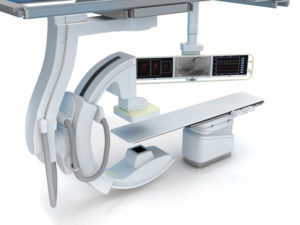Coronary Angiogram: What and Why
- Posted on: May 15 2018
- Leave a response
 Radiologic imaging has become a vital aspect of health care as technologies have continued to evolve. Today, we can observe much more than ever before, including hard and soft tissues throughout the body. One modality that facilitates non-invasive observation is computerized tomography, or CT. Advanced forms of computerized tomography even allow doctors to get up-close and personal with patients’ hearts. GO Imaging performs CTA, or computerized tomography coronary angiogram, to assist in the diagnosis and management of heart conditions.
Radiologic imaging has become a vital aspect of health care as technologies have continued to evolve. Today, we can observe much more than ever before, including hard and soft tissues throughout the body. One modality that facilitates non-invasive observation is computerized tomography, or CT. Advanced forms of computerized tomography even allow doctors to get up-close and personal with patients’ hearts. GO Imaging performs CTA, or computerized tomography coronary angiogram, to assist in the diagnosis and management of heart conditions.
What CTA Does
A coronary angiogram using CT observes the state of coronary arteries, the vessels that supply the heart with blood. This test produces accurate x-ray images of the various details of the heart, including chambers and various vessels in a manner that does not involve the insertion of a catheter, or tube, through the arm or the groin. CTA may also be performed to check for calcification in the coronary arteries or nearby blood vessels. This is referred to as Calcium Scoring.
Calcium Scoring provides a measurement of calcium deposits in coronary arteries and blood vessels. The degree of calcification correlates to the severity of coronary artery disease. Most people develop some degree of calcification with age. However, significantly higher amounts indicate a potentially dangerous risk of heart attack or other ischemic complications.
Due to the non-invasive and highly accurate nature of the CT coronary angiogram, this technology has become preferred by many doctors. It is important to note that, if you have been diagnosed with coronary artery disease, your doctor may recommend conventional coronary angiogram to manage your heart health.
Why CTA is Done
One of the primary uses of coronary CT angiogram is to check for blockage or narrowing of the arteries in the heart. This modality is useful for evaluating symptoms such as atypical chest pain. Cardiac CTA may also be indicated for congenital coronary anomalies in patients with a strong history of early-onset heart disease in the family. A cardiac CTA may also coincide with certain procedures for the treatment of atrial fibrillation, as it provides fast and convenient observation of pulmonary veins.
Our experienced technicians and radiologists provide precision care and interpretation of a variety of imaging technologies. To learn more about our services or to schedule an appointment, contact our Humble office (281.358.3800) or Houston office (713.874.0111).
Posted in: CTA

